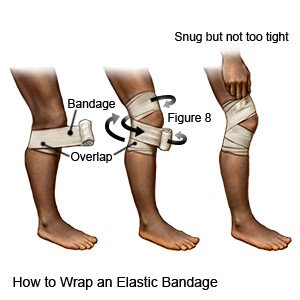Groin Strain
Medically reviewed by Drugs.com. Last updated on Apr 6, 2025.
A groin strain happens when a muscle or tendon is stretched or torn. Tendons are cords of tissue that attach muscle to bone.
DISCHARGE INSTRUCTIONS:
Call your doctor if:
- You have increased swelling and pain in your injured area.
- You have increased groin pain when standing or with movement.
- You have questions or concerns about your injury or treatment.
Medicines:
- Prescription pain medicine may be given. Ask your healthcare provider how to take this medicine safely. Some prescription pain medicines contain acetaminophen. Do not take other medicines that contain acetaminophen without talking to your healthcare provider. Too much acetaminophen may cause liver damage. Prescription pain medicine may cause constipation. Ask your healthcare provider how to prevent or treat constipation.
- Take your medicine as directed. Contact your healthcare provider if you think your medicine is not helping or if you have side effects. Tell your provider if you are allergic to any medicine. Keep a list of the medicines, vitamins, and herbs you take. Include the amounts, and when and why you take them. Bring the list or the pill bottles to follow-up visits. Carry your medicine list with you in case of an emergency.
Rest your groin:
You will need to rest your groin from activities that may cause you pain. This will help decrease the risk of more damage to your groin. Use crutches or a cane as directed.
Ice your groin:
Ice your groin to help decrease swelling and pain. Put crushed ice in a plastic bag and cover it with a towel. Put the ice on your groin for 15 to 20 minutes every hour. Do this for as many days as directed.
Wrap your groin:
Your healthcare provider will teach you how to wrap your groin with an elastic bandage or tape. When you wrap your groin, it becomes more stable. Wrapping your groin can help decrease your pain.
 |
Elevate the injured area:
Keep the leg on your injured side raised to help decrease pain and swelling in your groin. Use pillows, blankets, or rolled towels to elevate your leg as often as you can.
 |
Activity:
You may need to exercise the injured area after your pain and swelling have decreased. Exercises will help prevent stiffness in the injured area and increase strength. Return to your normal activities slowly. You could injure yourself again if you try to return to normal activity too soon. Return to your normal level of activity when:
- You do not have pain when you walk, run, or jump.
- Your injured leg moves like your other leg.
- Your injured leg feels as strong as your other leg.
Prevent another injury:
- Warm up and stretch before you exercise.
- Wear shoes that fit well.
- Wear equipment to protect yourself when you play sports.
- Do exercises as directed to build muscle strength. Stop if you feel pain or tightness in your groin.
Follow up with your doctor as directed:
Write down your questions so you remember to ask them during your visits.
© Copyright Merative 2025 Information is for End User's use only and may not be sold, redistributed or otherwise used for commercial purposes.
The above information is an educational aid only. It is not intended as medical advice for individual conditions or treatments. Talk to your doctor, nurse or pharmacist before following any medical regimen to see if it is safe and effective for you.
Further information
Always consult your healthcare provider to ensure the information displayed on this page applies to your personal circumstances.
